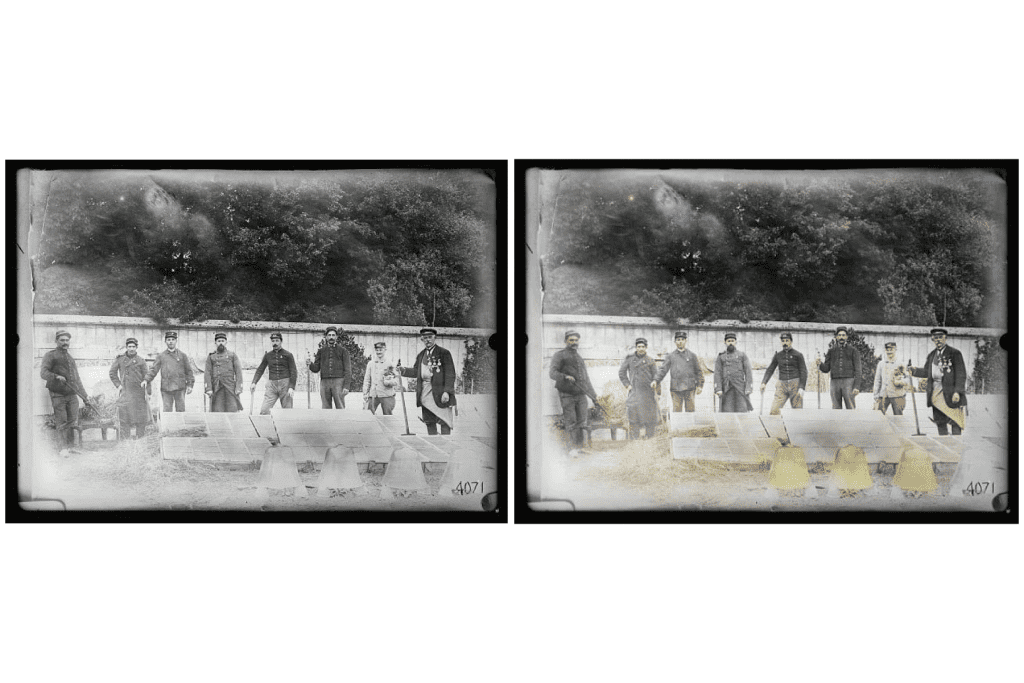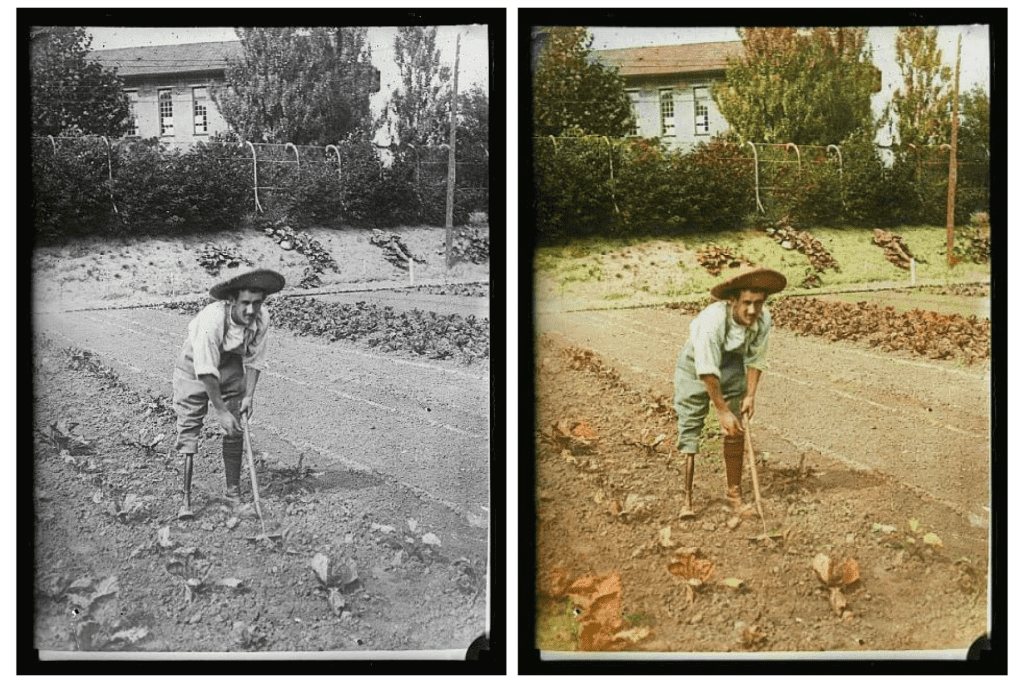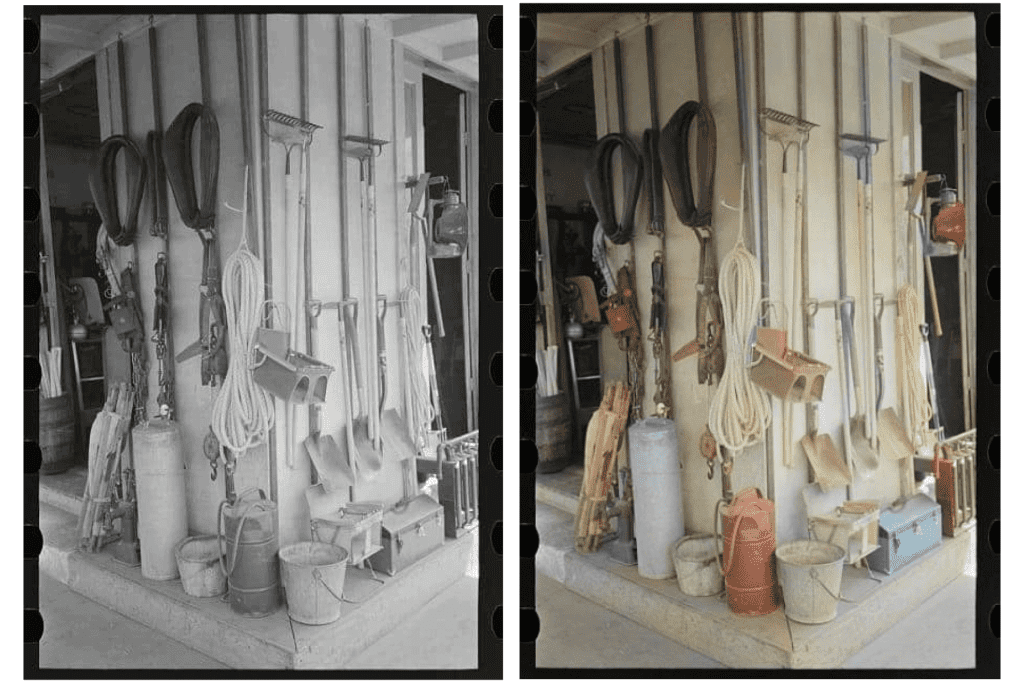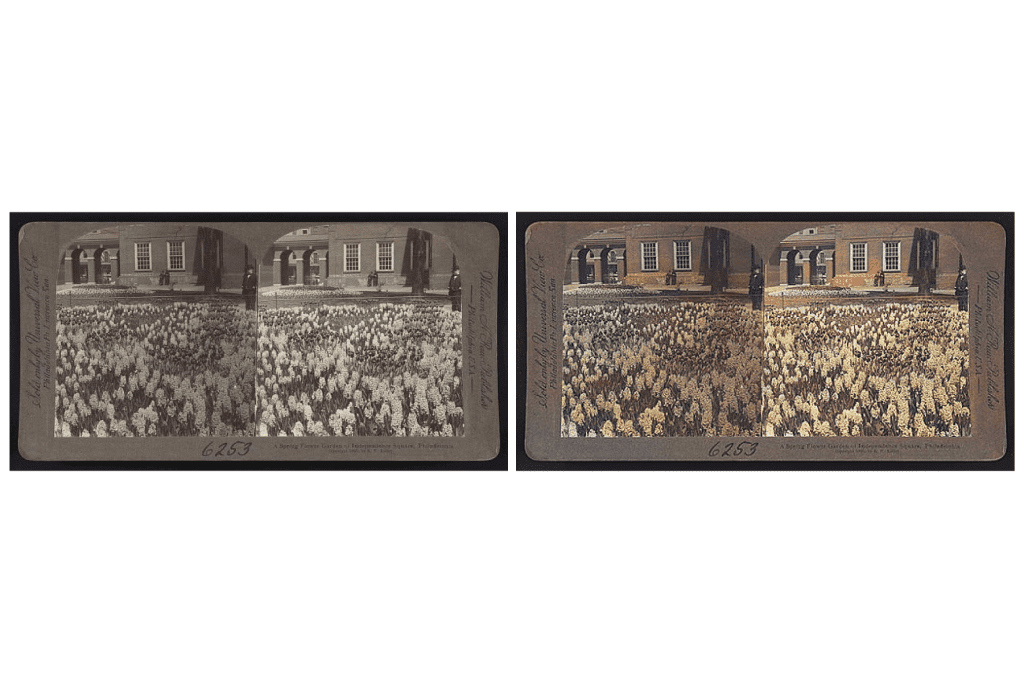Throughout history, gardens have long been a source of beauty and inspiration, as well as being a practical space for growing food.
While black and white photos can offer a glimpse into the past, seeing these very same gardens brought to life in vivid color is truly something special. That's why we're excited to share these 10 incredible colorized photos of gardens from the early 1900s.
Each photo offers a window into a bygone era, allowing you to appreciate the rich history rooted in each one. As you scroll through these photos, imagine yourself strolling through each space. It's the perfect escape from the fast-paced world we live in today.
So sit back and allow yourself to be transported to the early 1900s. We guarantee you'll be enchanted by the beauty of these incredible colorized photos of gardens from the past.
1. Children Cultivating Plants At A School Garden In Bayview, Alabama—1918

It was in 1902 when Fannie Griscom Parsons pioneered the creation of school gardens in the United States. This movement came only two years after the first landscape architecture program in the country.
The school garden program was introduced as a way for many young European immigrants to become "proper" American citizens by learning gardening and increasing their exposure to nature.
2. Man Tending To A Flower Bed In Arthur Curtis James Home Garden In Newport, Rhode Island—1917

Like a slice of life from 100 years ago, above is a picture titled "Beacon House Hill."
The image was taken by Frances Benjamin Johnston who wanted to portray a scene from a famous poem written by Rudyard Kipling, well-known English novelist and creator of The Jungle Book.
The image was taken only four years after the Garden Club of America was founded. The purpose of the club was to increase interest and knowledge of home gardening among those who were interested in the activity. The project was created to encourage the growth of civic planting.
3. American Journalist Frank G. Carpenter Digging Soil In A Garden—1900-1916

The exact location of this garden is unknown, but the Library of Congress tagged the image under the subject of Alaska, a place that Frank G. Carpenter wrote a book about.
Open-space gardens are more common in the early 20th century, compared to the private modern gardens we often see today.
The image above was captured two years after the United States Department of Agriculture began its research about which types of grass are suited for various climates.
4. White House East Colonial Garden—1917

This photo depicts a view of the Southeast Garden, designed by Beatrix J. Farrand. This new garden replaced Edith Roosevelt's East Colonial Garden.
The White House was first occupied by President John Adams in 1800, and in the very first year, a vegetable garden was added!
However, even before then, Washington expressed his desire to establish a botanical garden. Throughout the history of the White House, landscape design has remained an important component.
5. Police Lieutenant Mina Van Winkle Posing With Vegetables At A Lecture About The Importance Of Victory Gardening—1917-1918

Social worker and police lieutenant Mina Van Winkle spoke of the importance of victory gardening and food processing in order to support the United States' war efforts.
The image above was taken just a year after the end of World War I. It was in 1917-1918 when the United States government began to heavily endorse farming in personal and communal gardens in order to amend the decreasing food supply in the country.
Also called "war gardening," victory gardening was a way for men, women, and children to showcase their patriotism, supporting their idea that "food will win the war."
6. Soldiers Suffering From Tuberculosis Tending To A Garden Inside A Sanatorium Funded By The American Red Cross In France—1918

During World War I, developmental projects from all over the world were halted due to the lack of labor and funds. The Bligny Sanatorium for tuberculosis patients in France was already in construction when the first world war broke out, resulting in the postponed completion of the project.
While there was no description of the exact purpose of this garden in the sanatorium, gardens in hospitals were often used as roaming areas for patients with the hopes of improving their stress levels by being surrounded by nature and fresh air.
7. Amputee Soldier Gardening At La Maison Blanche—1918

A soldier with a prosthetic leg tends to the garden at La Maison Blanche, which was a home dedicated to the re-education of mutilated soldiers of the first world war.
The advent of the first world war did not halt the continuous development of gardening in smaller properties. Gardening still continued to be a source of produce for the soldiers, as well as the people who did not join the army but participated in war gardening.
Vegetables and fruits were important inclusions of gardens at this period in time, as the war caused widespread famine due to lack of available food.
8. Patients At A Garden In The American Military Hospital In Portsmouth, England–1918

Patient soldiers at an American military hospital in England grew fruits, vegetables, and other produce to supply the nearby hospital kitchens.
Inscribed in the description of the image above, "[hospital farm] includes about an acre of greenhouses, where patients are growing tomatoes, cucumbers, and a number of delicacies for the hospital kitchens. Close by are the flower gardens, not much ground for these in wartime..."
During the war, the concept of gardening spearheaded in 1913 by The Garden Club of America was overlooked due to the people's high demand for food.
Instead of taking care of flowers and cultivating native plants, gardeners focused on growing food on their lands to support the troops and their country.
9. Picture of Fruits Trees and Gardens At The Edward L. Trudeau Sanatorium Of The American Red Cross In Paris—1917-1920

Formerly a property near Plessis Piquet, Robinson in Paris, the chateau was transformed into a tuberculosis sanatorium equipped with gardens and rows of fruit trees.
Gardening became a form of therapy for patients in sanatoriums because it encouraged them to work outdoors near nature and be exposed to fresh air.
Light gardening was offered as an available activity for tuberculosis patients who could manage the task.
10. War Orphans In Montenegro Removing Weeds In A Potato Patch At A Junior Red Cross Of America Farm School—1920

A little over a year after the end of World War I, agricultural activities such as gardening and farming were taught to the children who were orphaned by the war.
The courses were taught by the American Red Cross in order to give the children access to practical education in hopes of helping them gain expertise to use in their future.
The project was also started for the purpose of helping the financially devastated country of Montenegro get back on its feet.
11. The Outside Of A Building Displaying An Array of Gardening Tools In San Antonio, Texas—1939

Pails, rakes, shovels, and ropes are displayed outside a building in San Antonio, Texas.
After the devastation of the first world war, American gardeners founded the American Horticultural Society or AHS. Currently still existing as the oldest horticultural society in the country, AHS was started to improve the status of gardening as more than a food source.
AHS, consisting of professionals and amateurs alike, was founded to endorse gardening as both a science and an art.
12. Spring Flower Garden In Independence Square, Philadelphia—1905

It's only fitting that one of the most historic places in the US is filled with gorgeous springtime blooms. Independence Square is where the Second Continental Congress met, Independence was declared, the Constitution was ratified, and the Liberty Bell rang. Historic and amazing, right?
13. Mount Vernon Flower Garden—1902

Mount Vernon is the birthplace of the United States' first President, George Washington. The grounds of this historic home was filled with beautiful landscaped gardens.
Gardens For The Future
In the short period between the two world wars, America utilized horticulture as a means to improve not only the food supply of the country but also the scientific knowledge associated with the practice.
War gardening was brought back after the start of the second world war.
Before the 20th century, gardening has already been an activity involving not only growing food but also a channel to express creativity in design.
But in the early 1900s, the two world wars reduced gardening to an effort used to make food due to scarcity.
After the second world war, gardening in the U.S. grew more common, especially because of the development of suburbs for the middle class. These residential areas provided areas for people to do gardening, and the activity became more common than ever.
During this period, gardens were almost always present in each home. This allowed the space to be more accessible to most people, who then attached gardens to backyards and patios.
This revival once again transformed the use of the gardens into spaces for relaxation and entertainment.
